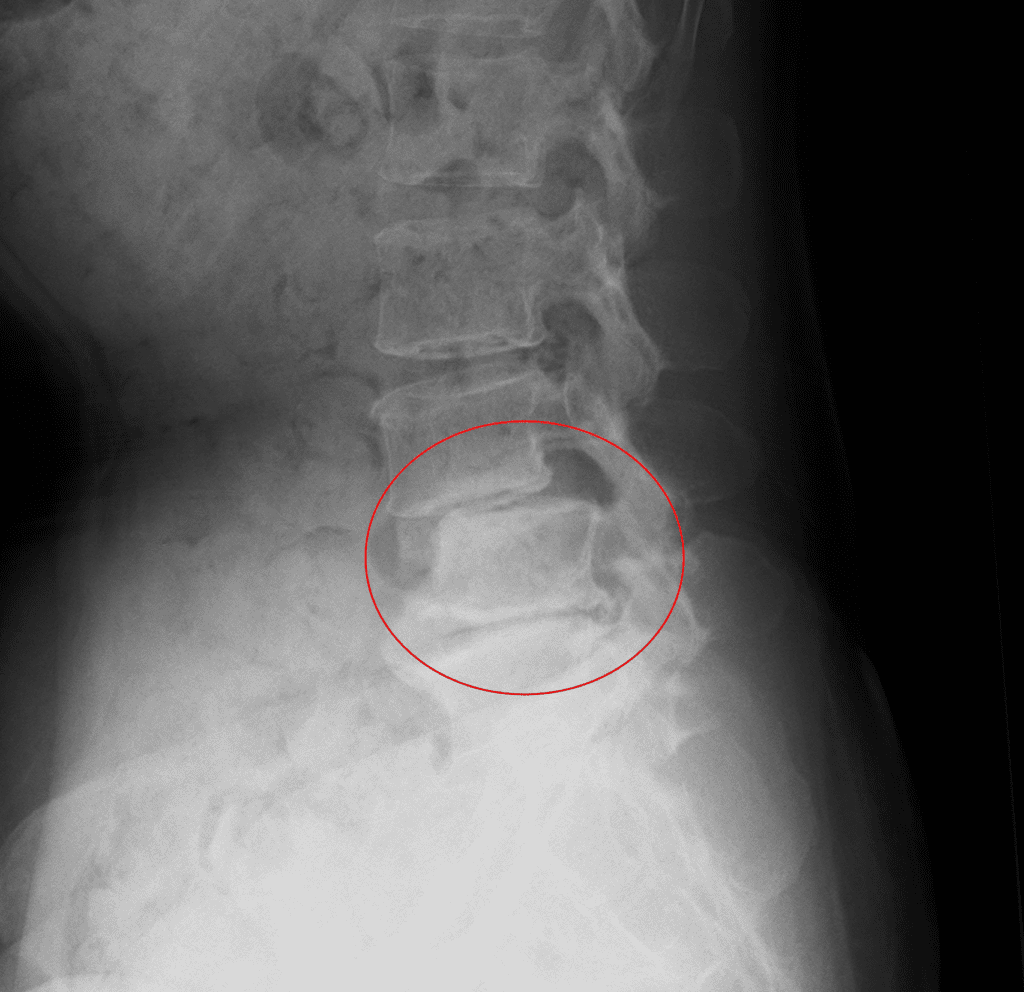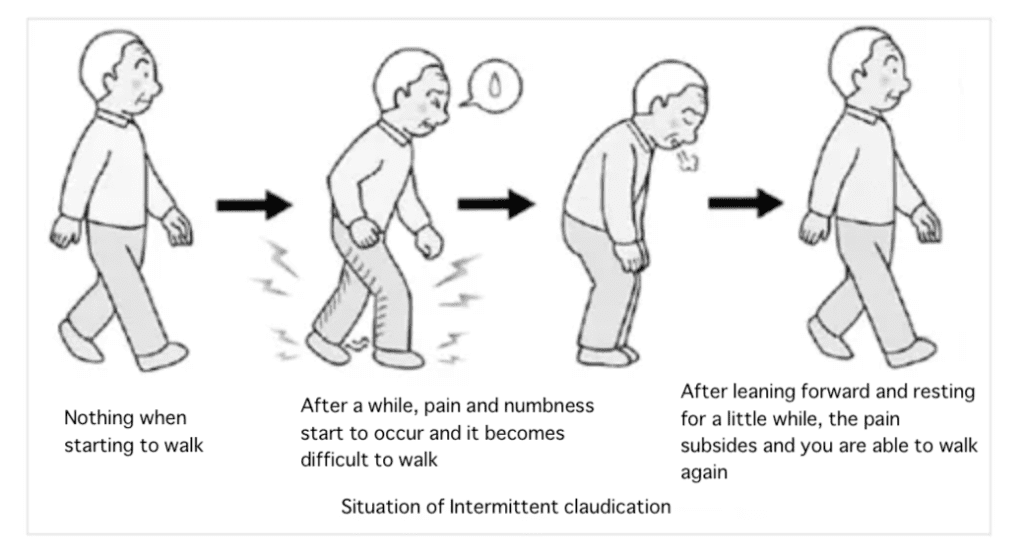Lumbar spondylolisthesis is a condition in which the vertebrae in the lower back move out of their normal position.
When spondylolisthesis develops, various symptoms occur and have a negative impact on daily life.
This time, we will explain the symptoms of spondylolisthesis.

Symptoms of spondylolisthesis
When the lumbar vertebrae become misaligned, the spinal canal through which the nerves pass narrows, causing lower back pain, pain in the buttocks, and pain and numbness in the lower legs.
A typical symptom of spondylolisthesis is intermittent claudication. While walking, you may experience pain and numbness in your buttocks, thighs, and calves, making it difficult to walk. After some rest, you’ll be able to walk again.

If the lumbar vertebrae slip and the nerve roots are compressed, it can cause sciatica (pain from the buttocks to the toes) and ankle dorsiflexion disorder (restricted dorsiflexion of the ankle joints narrows the range of motion in which the toes can be lifted up). Symptoms such as condition) may also occur.
As spondylolisthesis progresses, the symptoms continue even when the patient is at rest, and symptoms of urinary and defecation disorders may also occur.
Self-check for symptoms of spondylolisthesis
If you are experiencing pain in your daily life and are wondering if this symptom is due to spondylolisthesis, check the following:
- I have pain and numbness in my lower back, buttocks, and legs.
- It’s hard to stand for long periods of time
- Unable to continue walking without taking breaks (like intermittent claudication)
- It hurts when I arch my back
- It will be easier if you bend down
- Urinary leakage or difficulty in urinating (urination/defecation disorder)
If you have these symptoms, it’s possible that you have lumbar spondylolisthesis. However, the above symptoms can also occur when there is a disease such as spinal canal stenosis, so it cannot be said that “spondylolisthesis” is the definite illness without an examination.
If you experience any of the symptoms listed above, it is important to visit your doctor as soon as possible to receive an accurate diagnosis and appropriate treatment.
Diagnosis of spondylolisthesis
To diagnose spondylolisthesis, X-rays (X-ray tests) and MRI tests are first performed.
X-Ray
X-ray images can mainly be used to check the condition of bones.
MRI examination
An MRI scan can check for deformation of intervertebral discs, nerves, ligaments, and joints, the state of pressure on nerves, the presence of damage, and the presence of inflammation.
Check at medical examination
In addition to imaging tests, a physical examination will be performed during the consultation.
During the examination, we will perform a lower extremity extension test (SLR test) and a femoral nerve extension test (FNS test), and perform a neurological examination to check for abnormal sensations in the lower extremities and muscle weakness.
Other tests include CT examinations, myelography examinations, bone density examinations, and neurological examinations, but X-ray examinations, MRI examinations, and medical examinations are sufficient to determine whether spondylolisthesis requires treatment.
If you are diagnosed with spondylolisthesis
If you have been diagnosed with spondylolisthesis, some people may wonder if it will heal on its own.
Spondylolisthesis cannot be cured naturally because the bones have shifted out of place. Generally, treatment is first performed with conservative treatment, and if symptoms persist for a long time and do not improve with conservative treatment, surgery is recommended. During surgery, part of the vertebral body, such as the vertebral arch, is removed, the spinal canal is widened, and the unstable vertebral body is fixed with screws.
Recent research has shown that intervertebral disc degeneration is a contributing factor to spondylolisthesis. *1
Therefore, we believe that slippage cannot be prevented unless the degenerated intervertebral disc is repaired.
Therefore, at our hospital, we use the Cellgel method to treat spondylolisthesis caused by intervertebral disc degeneration.
*1 Reference source: I. Akkawi, H. Zmerly. Degenerative spondylolisthesis: A Narrative Review . Acta Biomedica, vol. 92, No.6, 2021.
Treatment at our clinic – Cellgel method
At our clinic, we inject a gel-like drug into the degenerated intervertebral disc to repair it. The volume of the intervertebral disc is preserved without decreasing, and the progression of spinal misalignment, which causes spondylolisthesis, can be prevented.
Unlike traditional surgery, this treatment does not involve incisions, so there are fewer postoperative risks.
If you have been diagnosed with spondylolisthesis or are suffering from lower back pain, please consider visiting our clinic.



